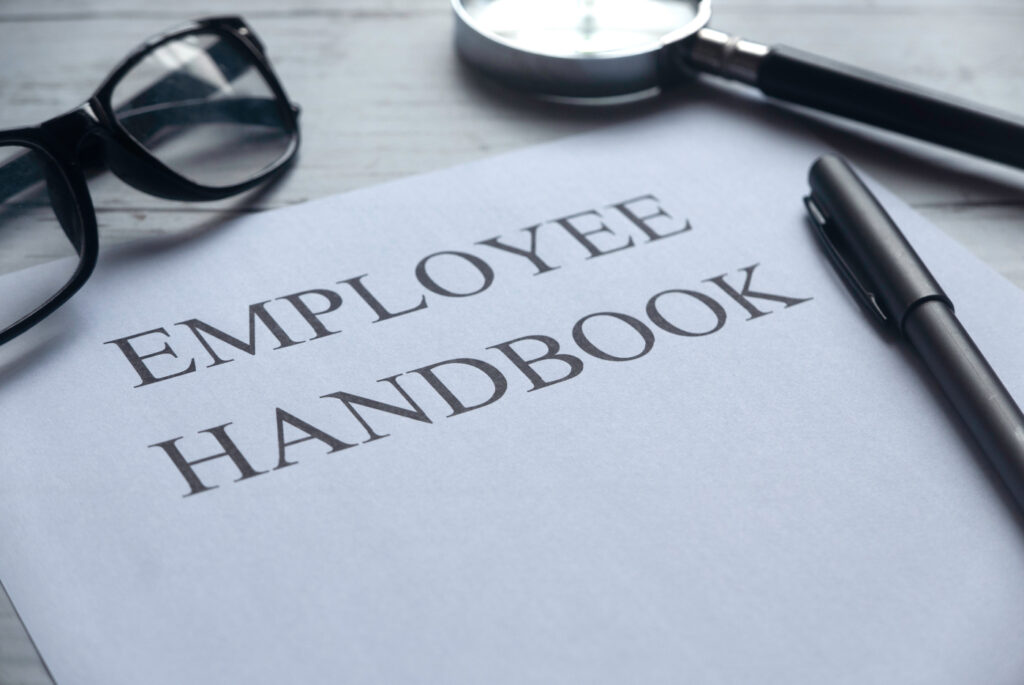Key takeaways
If you’re looking for tools to help keep track of drug-testing procedures, check out our HR Software Guide for solutions to help mitigate risk in the workplace.
Why do companies drug test?
Generally, companies require an employee to drug test for the following reasons:
- To reduce the risk of injuries or other accidents on the job.
- To protect the safety of customers and employees.
- To prevent property damage.
- To reduce company liability.
- To save the company costs related to injuries or company damage.
- To maintain workplace productivity and efficiency.
The process of drug testing employees
Company policies vary, but many employers require workers to submit to an on-site, rapid drug test before sending those with positive tests to a medical facility for confirmation testing. The drug tests themselves require either hair, urine, saliva, or blood samples from which employers can screen for the following drugs:
- THC (cannabinoids, marijuana).
- Cocaine.
- Amphetamines and methamphetamines.
- Phencyclidine (PCP).
- Opioids (opium, codeine, morphine, heroin).
- Hallucinogens (LSD, ecstasy).
- Alcohol (additional test).
Risks of drug testing in the workplace
If safety is not the cornerstone of a job position, then implementing a workplace drug-testing program may have more drawbacks than benefits. In particular, drug tests tend to be inaccurate and expensive, violate employee privacy, lower company morale, and inhibit an employer’s recruitment efforts.
When do companies drug test?
Formal drug-testing policies typically list four scenarios that prompt an employee drug test: pre-employment, post-accident, random, and reasonable suspicion. Companies could drug test employees in all or some of these scenarios. But whatever they decide, employers must document the policy and enforce it consistently among all employees in the same situation.
Pre-employment
Pre-employment drug testing typically occurs after an employer makes a job offer to the employee but before the employee starts, pending the drug test results. Employers hiring for positions in safety-sensitive roles, like truck driving or operating heavy equipment, use pre-employment drug screening to prevent hiring candidates who may pose a safety risk to business operations before hiring them.However, employers without a bonafide safety concern should hesitate to include pre-employment screening as part of their onboarding process, as it could stall recruitment efforts, especially in areas where certain substances are legal.
Expert Tip
If you are interested in a pre-employment drug screening as part of your onboarding, check out our list of the Most Reliable Employment Screening Services to help.
Post-accident
Post-accident drug testing occurs after an employee injures themselves on the job. While many employers conduct post-accident testing to deter drug use on the job, it can also prevent employees from reporting a workplace injury for fear of reprisal following positive results.
Instead, employers should consider a more nuanced post-accident drug test, such as one that tests individuals only if potential drug use could have contributed to the accident.
Random
Random drug testing is one of the most effective workplace drug use deterrents. Employers select employees at random for unannounced drug testing. Although great for businesses in high-risk industries like construction or transportation, companies should be wary before randomly testing all employees. Obligating employees to drug test in low-risk jobs like office work could infringe on employees’ right to privacy.
Reasonable suspicion
Reasonable suspicion drug testing involves drug testing employees for the following reasons:
- Showing physical or behavioral signs of intoxication, such as slurred speech or disorientation.
- Participating in unsafe work habits.
- Showing signs of being unfit for duty.
Although reasonable suspicion drug testing is meant to prevent injuries or accidents in the workplace before they happen, employers should also be careful such testing does not interfere with employee civil rights, such as those under the Americans with Disabilities Act.
Other scenarios
Outside of the four main scenarios, employers could also drug test employees after completing a substance abuse rehabilitation program or as part of an annual physical testing program in specific industries. Testing in these instances must align with employers’ safety policies without violating any federal, state, local, or civil rights laws.
Can employers legally drug test employees?
Yes, but it’s complicated. Drug testing employees is a requirement for some, such as employers with federal contracts under the Drug-Free Workplace Act of 1988 or in safety-sensitive industries like aviation, transit, and defense. Outside of these instances, private employers in the U.S. are not required to have drug-free or drug-testing policies.
Despite the lack of federal regulation, this does not mean employers shouldn’t drug test their employees, nor should all employers have a zero-tolerance drug-testing policy. Instead, employers must be aware of the intersection of state, local, and other workers’ rights laws when deciding to drug test employees.
State laws
Drug-testing laws vary by state. In some states, like Michigan, there are no laws prohibiting employers from establishing drug-testing policies in the workplace. However, other states, like Maine or Ohio, dictate who can be tested, how they can be tested, how much advance notice they receive, and how to discipline or rehabilitate employees following a positive test.
To make matters more complicated is the growing legalization of marijuana and other psychedelics for either medicinal or recreational use. Employers, especially those in safety-conscious industries like construction and transportation, are concerned with how these laws conflict with their already well-established drug-testing programs.
Because marijuana continues to be a Schedule I controlled substance at the federal level, employers have some leeway when testing for cannabis. While employers must still follow the drug-testing laws of the states of their employees, they can still test for marijuana use.
“Many employers have decided to treat marijuana as they do alcohol — only prohibiting the use of marijuana during the workday as well as forbidding employees from being under the influence of the drug at work,” said Jonathan Sigel, a partner at Mirick O’Connell in Massachusetts. “Employers (in high-risk industries) often choose to continue testing for marijuana for their safety-sensitive jobs because of the greater risk of potential harm that could be caused by an employee who is under the influence of marijuana at work.”
In other words, prohibiting controlled substances only while employees are at work is one way employers attempt to maintain safety standards while juggling new state legislation.
Employee protections
Federally, employees have certain protections under the Americans with Disabilities Act, the Family Medical Leave Act, Title VII of the Civil Rights Act of 1964, and the National Labor Relations Act. In short, these laws prevent employers from singling out certain protected groups over others for drug testing or denying employees protected unpaid leave for substance abuse rehabilitation. Additionally, employers with a collective bargaining agreement must negotiate with their unions before implementing a drug-testing policy.
Even if both federal and states allow employers to implement a drug-testing policy, employers must consider how their employees’ legal behavior will affect their drug test results and infringe on their civil liberties. Incorrectly requiring an employee to test could result in hefty fines or lawsuits for wrongful termination, defamation, discrimination, or invasion of privacy.
For example, employers with a “reasonable suspicion” policy — drug testing an employee if the company believes they are under the influence at work — could have negative consequences for employers. Employers could inadvertently target individuals with legal prescriptions for controlled substances or a disability. This could lead to a discrimination lawsuit or cause current and incoming employees to look unfavorably at the organization. This is especially true with marijuana legalization.
“We (need) to reorient how businesses (think) about marijuana use generally,” said Heather Hammond, an employment law attorney at Gravel & Shea in Vermont. “Since it is legal to buy and use the substance for recreational purposes (in some states), employers (need) to adjust their expectations for employees’ off-work conduct.”
Before penalizing their workforce, employers need to consider whether drug testing is truly a safety issue. If the need is there, consult local employment law attorneys before developing a drug-testing program or requiring an individual to submit to testing.
Legal updates
Recent developments in drug-related legislation have significant implications for workplace drug testing policies. Notably, the DOJ has proposed reclassifying marijuana as a Schedule III substance, a less dangerous category than its antiquated Schedule I status. If enacted, this change could affect employers by potentially altering drug-free workplace policies.
“While continuing to test for marijuana is lawful,” suggests employment law attorney Hammond, “each employer has to decide for itself whether it makes business sense to eliminate that pool of potential workers from its ranks” since marijuana is now legal in some form in more than half the country. If your policy tests for illegal drugs, this may not include marijuana so attorney Hammond suggests updating your policy to “prohibit the use or possession of ‘controlled’ substances, and specifically list marijuana as an example of such a substance.”
As more people use marijuana recreationally and medicinally, more workers are subsequently testing positive for marijuana. This could also influence employers to reconsider drug testing. With these trends in mind, it’s important for businesses to stay updated on evolving regulations to ensure compliant, effective, and fair policies.
Best practices for creating and maintaining a drug testing policy
- Understand legal requirements. Stay updated on federal, state, and local laws related to drug testing, particularly recent changes like the DOJ’s proposed reclassification of marijuana, and ensure that internal policies comply with these regulations.
- Define clear objectives. Establish the purpose of the drug testing policy, such as ensuring workplace safety, complying with regulations, or maintaining productivity and communicate these objectives clearly to employees.
- Develop a comprehensive policy. The policy should outline the types of drug tests conducted, the substances tested for, and the consequences of positive results. Moreover, it should be enforced fairly and consistently.
- Implement with transparency. Inform employees about the policy before implementation and provide them the details on when and how testing will occur, their rights, and how their privacy will be protected.
- Train and educate. Train managers and HR personnel on the policy’s implementation and how to handle sensitive situations. Offer employees education on substance abuse prevention and the resources available to them.
- Maintain records. Keep thorough records of all drug tests conducted, results, and any actions taken. This helps in defending against potential legal challenges and ensures consistency in policy enforcement.
- Review and update regularly. Periodically review the existing drug testing policy to ensure it remains compliant with evolving laws and effective in achieving workplace goals. Update the policy as needed and communicate any changes to employees.
Should employers implement a drug-testing policy?
The decision to implement a drug-testing policy is a business one requiring careful consideration. Some questions employers should ask themselves before starting a drug-testing program include:
- Does my industry require drug testing?
- What are our risks for injuries in the workplace?
- Where are my employees located? Are they impacted by any state or local drug-testing laws?
- What is the cost of implementing a drug-testing program?
- How will a drug-testing program affect our company culture?
“For some businesses, the reason (to drug test) is a clear state or federal mandate, in which case the analysis is straightforward,” according to Murray. “For others, the reasons are less clear.”
In other words, in high-risk industries like construction, healthcare, and manufacturing, employers can and probably should implement a drug-testing program to ensure the safety of the business and its workers. However, private-sector employers outside of safety-sensitive industries should reevaluate their existing drug-testing policies or hesitate before implementing a policy.
As drug-testing laws evolve and change, so do workers’ outlooks on these practices. Perhaps a more achievable way to promote safety and productivity in the workplace is for employers to focus less on drug testing and more on performance and results, so employees have the freedom to live their private lives as they choose.
If drug-testing policies are an absolute must for your industry, check out HR Software and Onboarding Software Guides for solutions to help with your compliance concerns.





